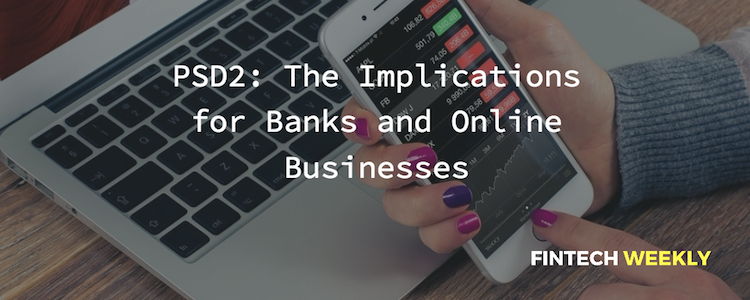Now technology is transforming the financial services landscape for the unbanked and the underbanked.
The Vulnerable Unbanked, Underbanked, Credit Invisible
Approximately 70 million Americans fall into the “underserved” category and 10 million are “unbanked.” Together, they pay about $138 billion per year in fees and interest for check cashing and short-term loans.
According to the Council of Economic Advisers (CEA) Issue Brief of June 2016, the unbanked pay between 1 and 5 percent in fees just to cash their checks, totaling more than $1,000 per year. A typical checking account, on the other hand, charges fees of about $100 per year.
About 26 million Americans are credit invisible – that’s one in every 10 adults who have no credit history with a nationwide consumer reporting agency. This makes acquiring credit extremely difficult, so many of these Americans turn to payday loans and auto title loans to help make ends meet.
And the numbers are staggering: approximately 25 percent of Americans report that they cannot cover an unexpected $400 expense without using a payday or auto title loan. Nearly 50 percent would not be able to cover an unexpected expense of $600 without using a payday or auto title loan.
This “solution” usually only makes matters worse: A 2016 Pew study reported that people who use payday loans borrow an average of eight times over the course of a year, spending an average of $525—or nearly 400 percent—in interest.
People who rely on title loans fare only slightly better, paying an average of 339 percent APR, according to the CEA.
Yet, traditional financial institutions have not responded to the needs of the unbanked, underbanked, and credit invisible, giving rise to a rapidly growing alternative financial services market.
Technology: The Great Disrupter
Fortunately for the unbanked, underbanked, and credit invisible, the same technologies that have been transforming traditional financial services are now providing safer, more affordable, and more financially “healthy” alternatives to the alternative financial services market.
The CEA found that there were more than 2,000 new fintech startups in February 2016, which was a dramatic leap up from the 800 startups in April 2015.
The first waves of financial services technology innovation, however, were not well suited for those in the unbanked and underbanked populations. Instead, they created a sort of digital divide rather than serving as a bridge between the economic divides of the banked and the unbanked. According to the CEA, less than half of “households in the bottom quintile have adopted the internet at home,” which is a limiting factor in adoption of technologies like online banking. However, mobile and smart phone ownership among all populations have been on the rise, along with mobile-accessible banking and lending offerings. The Federal Reserve Board 2016 Report showed that 40 percent of unbanked and 70 percent of the underbanked people have smartphones, and 55 percent of those people use mobile banking.
Because the Federal Reserve reported that “consumers use their smartphones to inform their financial decisions,” the CEA concluded that “mobile phone and smartphone technology appears to be a useful way to address financial inclusion by offering an additional way to perform payment, as well as a way to enhance savings.”
Perhaps even more impactful has been the advent of automated processes and algorithms that make lending systems faster, more efficient, and possibly more equitable than traditional loan processes. Such systems, used to access credit histories, title documents, liens, and auto value estimates, remove significant barriers for consumers in need of fast cash. Such systems can also be used to provide an avenue for making visible the credit invisible.
The Business Case for Non-Bank Lending Platforms
As noted earlier, about 70 million Americans are financially underserved. That’s a consumer base that has been spending $138 billion in fees and interest, and it’s a base that’s been growing at 9 percent per year since 2011.
Since so many consumers, even among the underserved population, own and can access financial services via their smartphones, offering financial products to the unbanked, underserved, and credit invisible segment has become a promising and profitable possibility.
At the same time, the same technologies and innovations that are helping to bring financial services to this population are also lowering the costs and risks associated with offering such services. When brick-and-mortar storefronts eat up 66% of revenue, lenders in the alternative financial services market can operate with far less overhead.
Through the use of big data, credit-scoring models, auto title verification, lien searches and vehicle estimates, companies can now offer borrowers faster loan approval while decreasing the risk of default. Lenders can improve payment success by scheduling reminders delivered to borrowers’ smart phones and offering payment via smartphone.
Lenders in the alternative financial services space can also help borrowers create or build upon established credit by reporting to major credit bureaus. According to the CEA, “financial inclusion can lead to better outcomes for both individuals and economies, including greater investment in education and businesses, better health, lower inequality, and greater entrepreneurship.”
While helping people in the short term with their urgent financial need, lenders in the alternative financial service market can also help them in the long term by providing a pathway to establish or rebuild good credit.
About the author
Gregory Keough is CEO of Finova Financial, the industry’s first cloud-based platform for affordable and socially conscious emergency consumer loans. One of the few living recipients of the Central Intelligence Agency's (CIA's) Intelligence Star Medal for extraordinary courage in the line of duty, Keough has 25 years’ experience developing mobile financial solutions to accelerate financial inclusion for companies like MFS, a joint venture created by MasterCard and Telefonica.









